Content of the article
- /01 What is brand collaboration?
- /02 Types of brand collaborations
- /03 What kind of collaborations can brands use?
- /04 Benefits and challenges of collaboration
- /05 How to evaluate the effectiveness of brand collaboration?
- /06 How to plan successful cooperation with brands?
- /07 Risks of collaboration and ways to minimize them
- /08 Examples of collaborations with world famous brands
- /09 Famous collaborations of Ukrainian brands
- /10 Conclusions
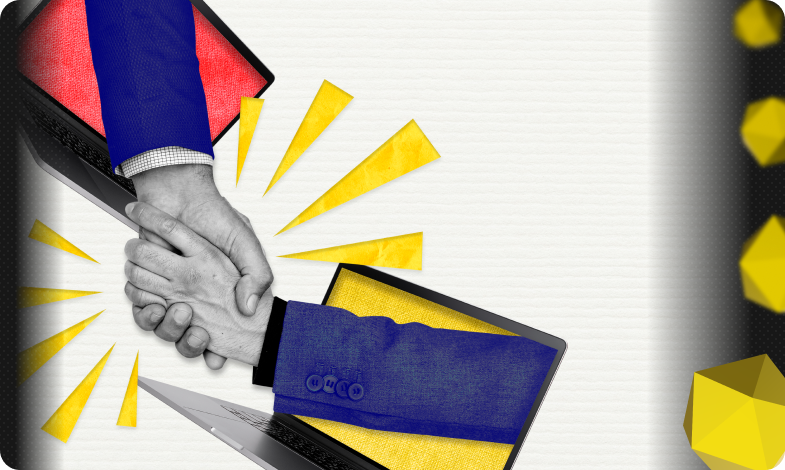

In a marketing environment where competition for consumer attention is constantly growing, brand collaborations are proving to be effective in numbers. According to Sprout Social research, the global influencer marketing market will grow to $32.55 billion in 2025, up from $24 billion in 2024. And about 93% of influencers say that the quality of brand content is crucial when choosing a partner for cooperation. Digital Marketing News notes that during economic downturns, brands that increased their marketing investments in 60% of cases received a better ROI than competitors who cut their budgets.
In this text, we will take a closer look at what brand collaboration is, which partnership formats work best, how to measure their effectiveness using key metrics, and what steps guarantee success. In the end, you will receive practical ways to organize collaboration and vivid case studies of Ukrainian and global projects that will inspire your own joint project.
What is brand collaboration?
Collaboration is a strategic partnership between two or more companies that involves the joint creation of a product, marketing campaign or other project. Unlike traditional advertising, where one company buys media space from another, in a collaboration, partners equally pool resources, expertise, and audiences to achieve common business goals. This model of interaction allows for the most efficient use of the financial and creative capabilities of each participant, reducing costs and risks while increasing the recognition of both partners.
Types of brand collaborations
Today, brand collaborations are gaining momentum due to the flexibility of formats and the ability to address different audiences. There are several key types of partnerships that differ in terms of participants and project goals.
So, there are three types of collaborations.
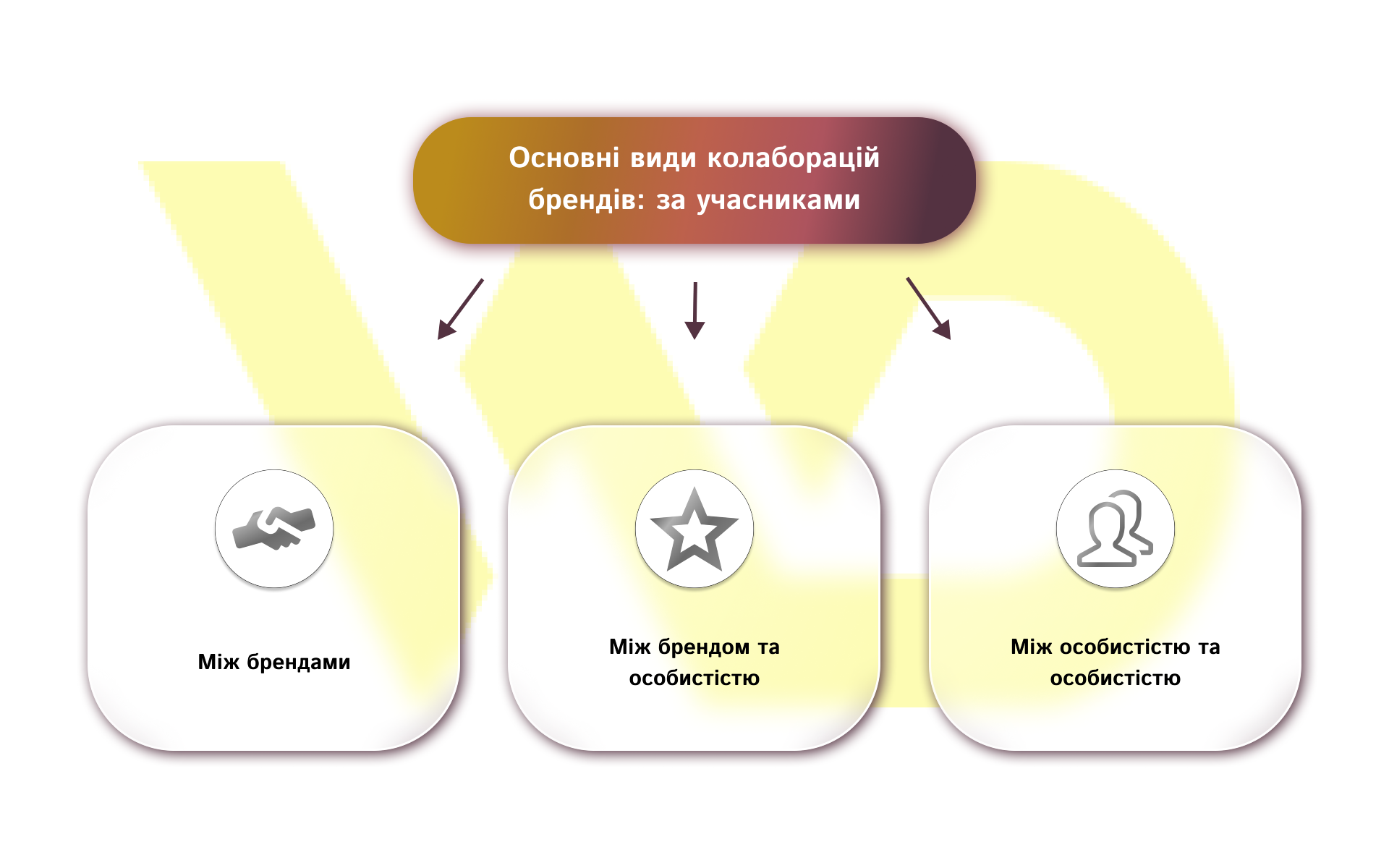
- Between brands: joint development of a product or a large-scale advertising campaign, where companies share resources and audiences equally.
For example: the Supreme x Louis Vuitton collection, which combined Supreme’s streetwear aesthetic with Louis Vuitton’s luxury, resulting in an instant sell-out and a powerful PR response.
- Between a brand and a personality: engaging an influencer, expert, or celebrity to promote products or services using the trust of their audience.
For example: Nike’s Air Jordan sneaker line featuring Michael Jordan, which has become a cult product and significantly expanded the brand’s customer base among basketball and street style fans.
- Personality-to-personality: two opinion leaders or experts come together to create joint content, an event or an educational product, forming a mutual exchange of audiences.
For example, the joint podcast The Joe Rogan Experience x Elon Musk, where Elon Musk was a guest, which generated huge interest from both the tech community and the mass audience and allowed both parties to attract new subscribers.
Each of these cooperation formats allows you to achieve different marketing objectives. The choice of a specific type of collaboration depends on the goals, resources, and nature of the audience that the partners seek to reach.
What kind of collaborations can brands use?
Companies or individuals can choose different formats of collaboration depending on their goals and resources. Each format has its own benefits, from creating unique products to raising your expert status. Below are the main types of collaborations.
Product collaborations
Joint development and production of a new product or limited edition, where partners combine production facilities, design and marketing. This allows them to offer consumers a unique offer and share the costs of development and promotion.
Marketing collaborations
Combining efforts in promotion without changing the assortment. Joint advertising campaigns, content projects, cross-promotions on social media and email newsletters. The format provides mutual PR and expands audience reach.
Event collaborations
Partnership in the organization or sponsorship of events – from master classes to festivals. Collaboration at events allows you to interact directly with customers, collect feedback and strengthen the brand through joint co-branding at the location.
Content collaborations
Creating joint expert materials: articles, videos, podcasts, or infographics. By combining the knowledge and channels of both partners, the content reaches a wider audience and increases the expert status.
Technological collaborations
Integration of technologies and R&D resources to develop innovative solutions or services. This format speeds up the time to market for new technologies and optimizes research and implementation costs.
The variety of collaboration formats allows brands to flexibly solve both marketing and strategic business problems. The choice of a specific type of collaboration should be based on goals, resources and expected results to create added value for both parties.
Benefits and challenges of collaboration
Collaboration brings a number of significant benefits to businesses. The key ones include:
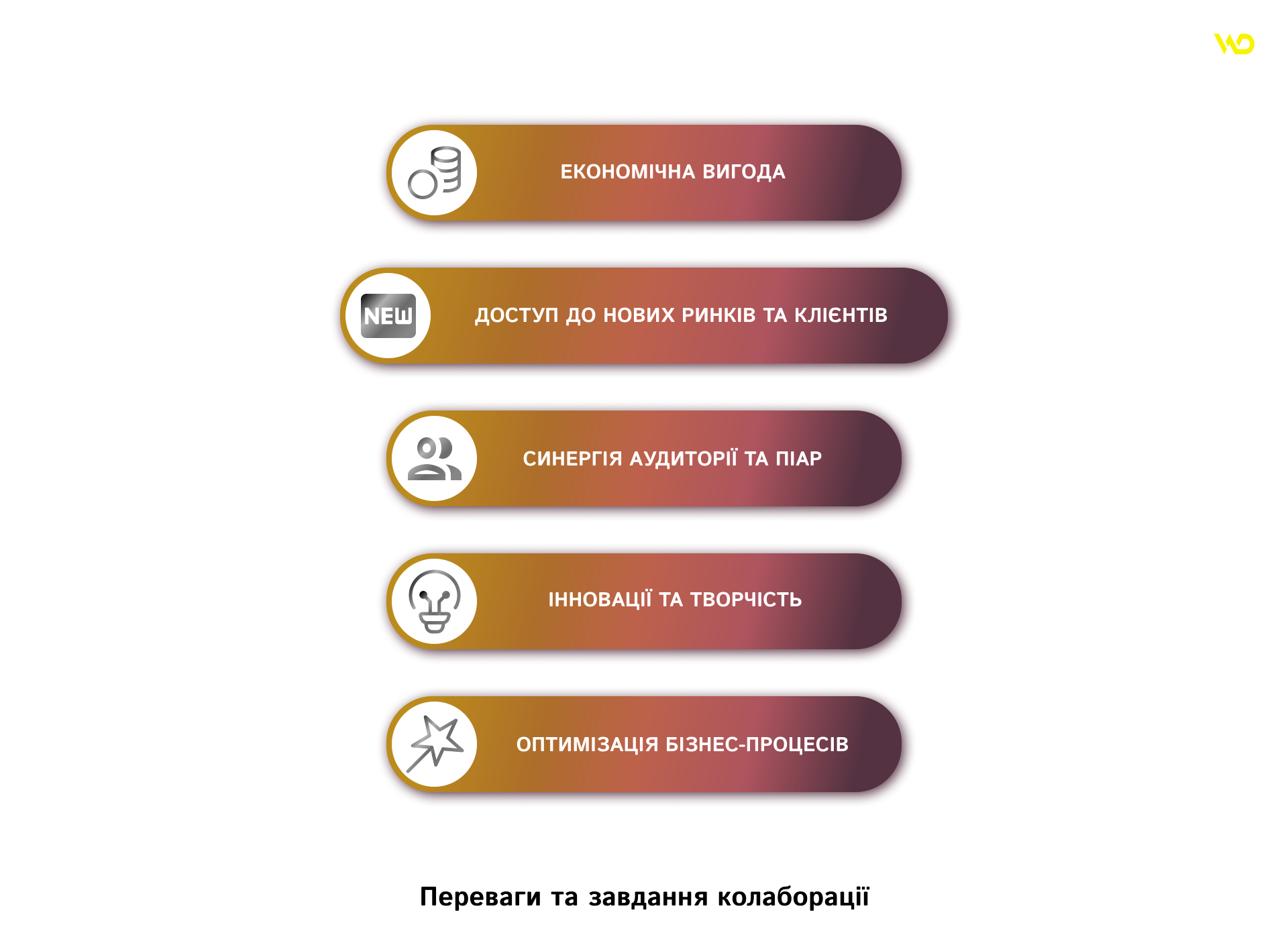
- Economic benefits.
Partners share the costs of developing a joint product and marketing. This is especially important for small and medium-sized businesses: by combining budgets, partners can achieve increased sales and profitability without excessive investment.
- Access to new markets and customers.
Joint projects provide access to each partner’s customer base. For example, a local retail chain, working with an international company, can access global sales sources at almost no additional cost.
- Synergy of audience and PR.
Through mutual PR and cross-promotion, the partners reach a wider audience. Joint campaigns provide both brands with a powerful resonance.
- Innovation and creativity.
Collaborations stimulate the emergence of new ideas and products. By interacting, companies go beyond the usual solutions. This can be the development of revolutionary products or non-standard marketing mechanisms.
- Optimization of business processes.
Partnerships allow companies to learn from each other’s best practices. For example, a company can improve logistics or supply chain thanks to the partner’s expertise, reduce costs, and speed up time to market.
Thus, thanks to the synergy of resources and experience of the partners, the collaborations successfully solve business problems, ensuring sustainable growth and increasing competitiveness.
How to evaluate the effectiveness of brand collaboration?
The effectiveness of cooperation is assessed by several key indicators that allow us to understand how successfully the partners have achieved their goals.
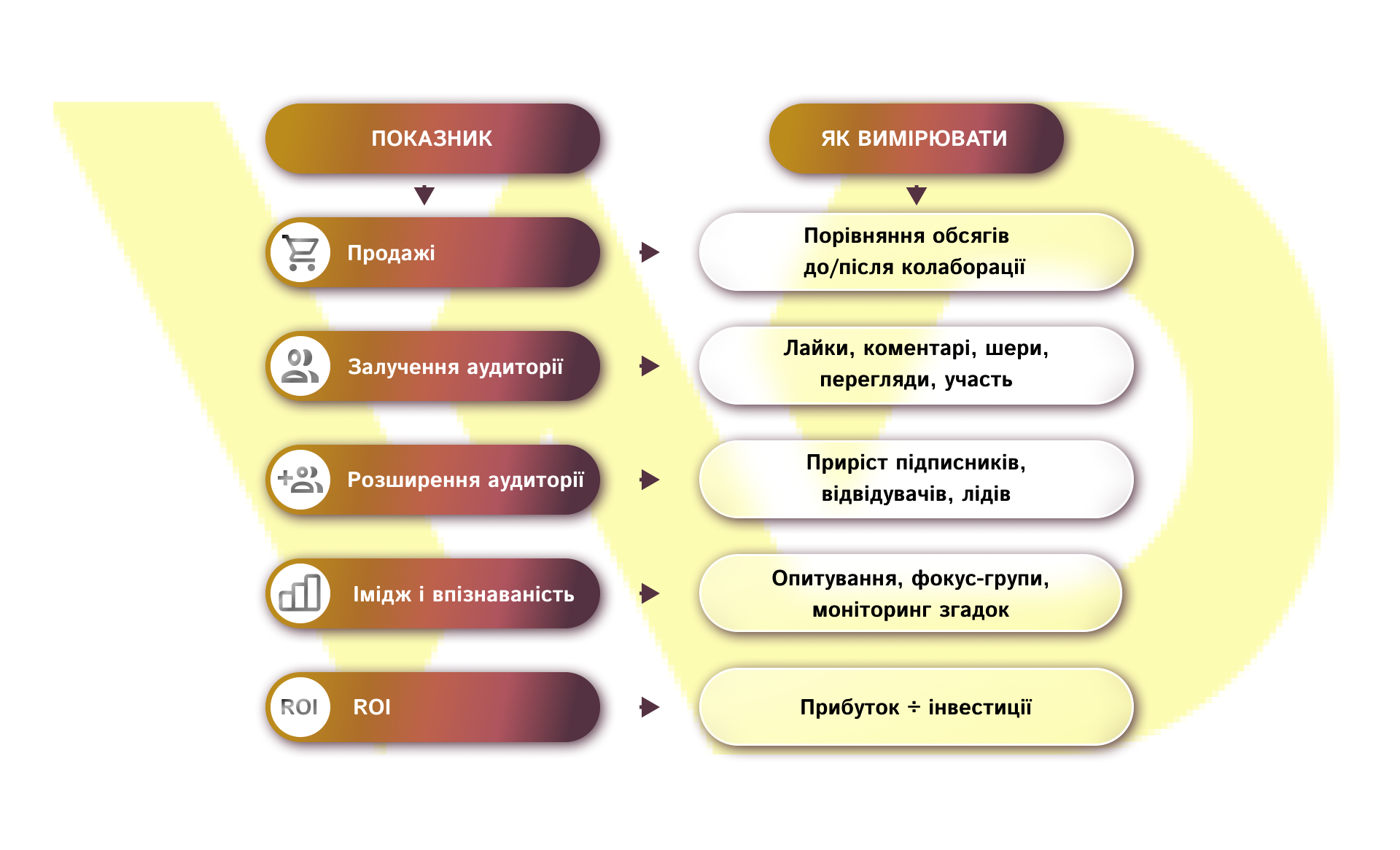
The first and most obvious criterion is an increase in sales. Compare the sales of a joint product or campaign before and after the start of the collaboration. It is important to take into account both direct purchases and indirect conversions (for example, registrations or requests for testing).
The next indicator is the level of audience engagement. The metrics of interaction on social networks (likes, comments, shares), the number of views of shared content, and participation in events (for event collaborations) are analyzed. A high level of interaction indicates the interest of target segments and high-quality mutual PR.
The third aspect is audience expansion. The growth of new subscribers, website visitors, or email newsletter subscribers of each partner is evaluated. This indicator shows how successful the exchange of customers between brands was.
The next step is to influence the image and recognition. For this purpose, brand awareness research is used: surveys, focus groups, or monitoring of mentions in the media and on the Internet. The growth of positive mentions and the tone of publications means successful popularization through collaboration.
Finally, ROI (return on investment) is the ratio of the profit received from a joint project to the investment in its implementation. This financial KPI allows you to assess how profitable the cooperation with brands was.
Only a comprehensive analysis based on the above metrics makes it possible to draw conclusions about the feasibility of further joint projects and optimize the partnership strategy.
How to plan successful cooperation with brands?
A successful brand collaboration begins with clear strategic planning. Only when the partners have clarified the expected results and assigned roles can they proceed with the project and be confident of achieving the objectives.
The planning steps are as follows:
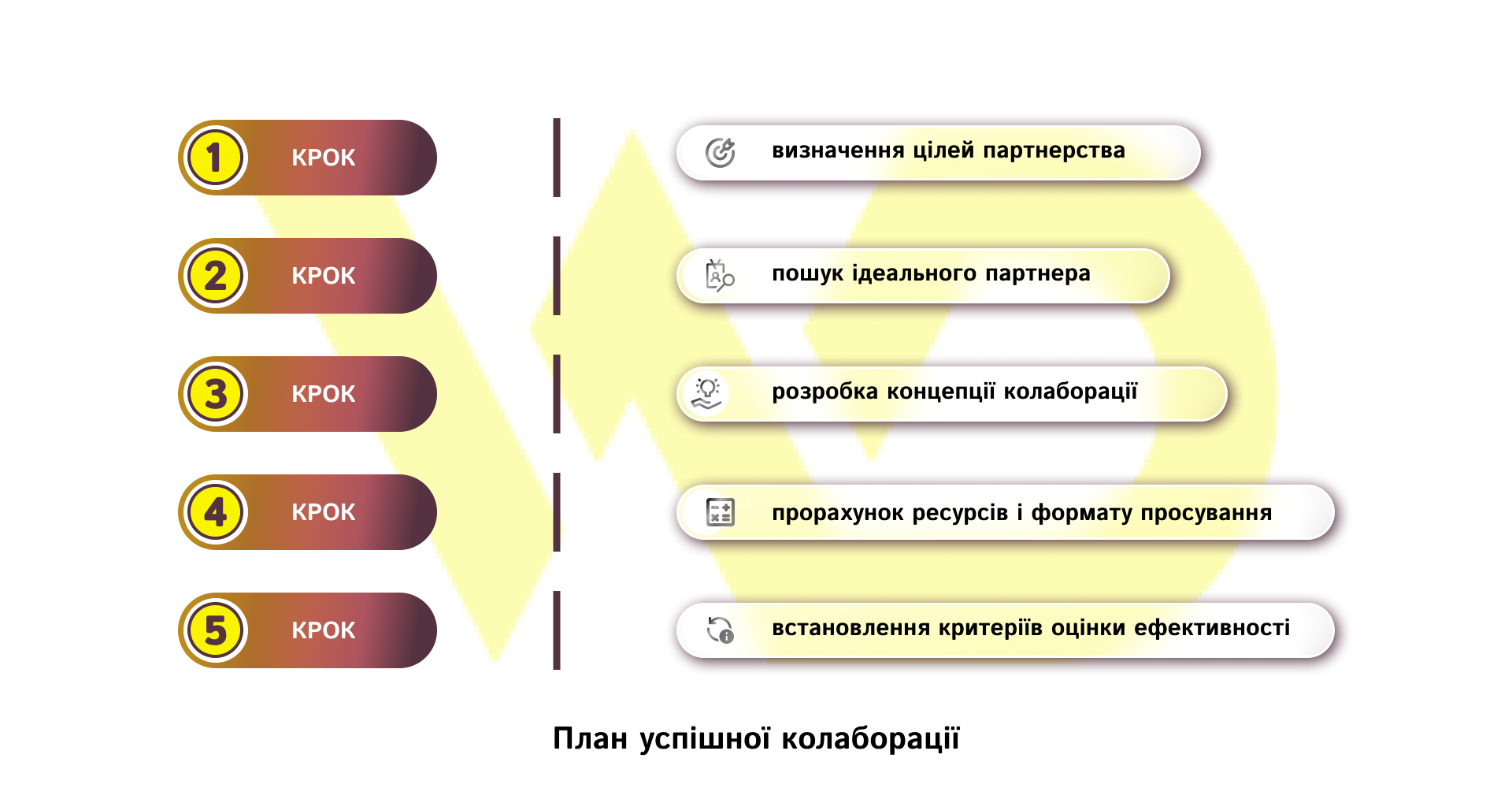
- Defining the goals of the partnership.
Define whether you want to increase sales, enter a new market, increase awareness, or launch an innovative product. Unify the understanding of the goal among all participants to avoid disagreements in the process.
- Finding the perfect partner.
Choose a company with a similar audience and values, but not a direct competitor. Check the reputation, cases, and resources of a potential partner to ensure synergy.
- Development of the concept of collaboration.
Formulate a single idea: a joint product, marketing campaign, or event. Write down the tasks and areas of responsibility of each person: who is responsible for production, who is responsible for promotion, who is responsible for logistics.
- Miscalculation of resources and promotion format.
Estimate your budget, time, and human resources. Identify channels for mutual PR: social media, email newsletters, media partners, offline events.
- Establishing performance evaluation criteria.
Choose KPIs: number of new customers, engagement rate, sales volume, media mentions. Schedule regular monitoring of the indicators and adjust the strategy as needed.
Clear planning of each stage ensures that cooperation with brands brings the expected results. This approach minimizes risks, optimizes resources, and ensures the synergy needed to successfully launch a joint project.
Risks of collaboration and ways to minimize them
Even the best-planned brand collaborations can face unforeseen risks that can undermine popularization and audience engagement. Below are the key threats and specific steps to minimize them to ensure that brand collaborations remain successful.
|
Risk |
Description |
The way to minimize |
|
Uneven expectations of partners |
Different visions of KPIs, budgets, or timelines can lead to conflicts and project stalling. |
Hold a workshop on setting SMART metrics in advance and formalize them in the project agreement. |
|
Legal and financial uncertainties |
Uncoordinated terms of distribution of costs, profits or intellectual property rights. |
Use ready-made contract templates, finalize them with the legal team, and sign the NDA. |
|
Inconsistency of brand values |
Partners can be perceived by the audience as «unsuitable,» which damages the image of both parties. |
Conduct a brand fit analysis: audience surveys, checking reputation in social networks and the media. |
|
Failure to meet deadlines and exceed budget |
Late implementation or additional costs reduce ROI and undermine trust in cooperation. |
Create a detailed Gantt timeline with a time buffer and checkpoints to estimate intermediate costs. |
|
Inefficient monitoring of KPIs |
Lack of efficiency in identifying problems leads to a decrease in customer engagement and recognition. |
Integrate Google Analytics, Brand24/YouScan, and CRM (HubSpot, Salesforce) for automated reporting. |
A clear understanding of potential risks and pre-thought-out measures to minimize them make cooperation with brands safe and effective. As a result, the collaboration brings the planned results without unforeseen interruptions or conflicts.
Examples of collaborations with world famous brands
The most successful cases of brand collaborations demonstrate a variety of formats and a beneficial combination of partners’ strengths. Below are some of the landmark examples that have become a benchmark for similar projects around the world.
Supreme x Louis Vuitton
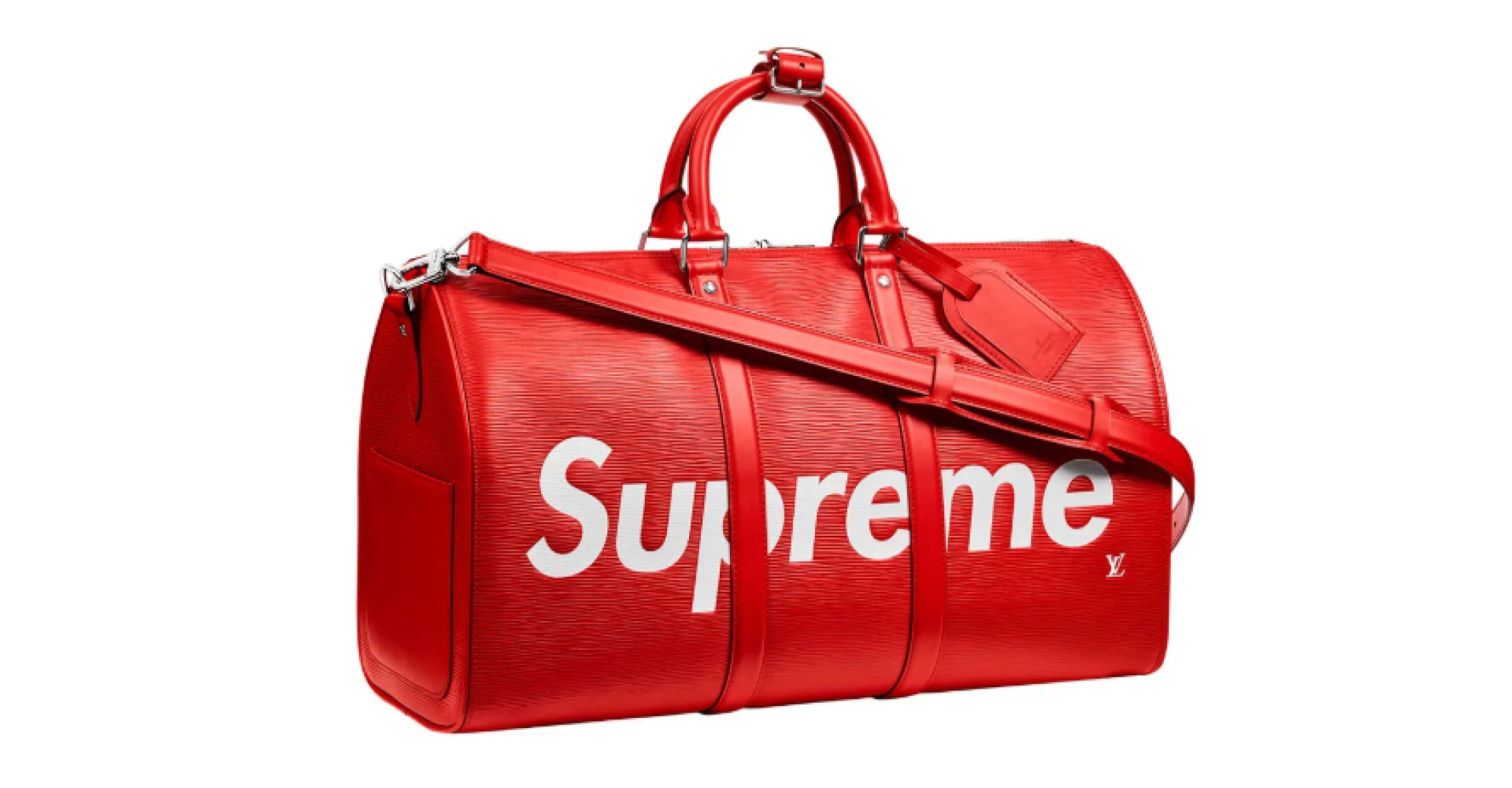
This collection combined Supreme’s streetwear aesthetic with Louis Vuitton’s luxury, creating limited edition jackets, bags and accessories that instantly sold out around the world and became a fashion industry event.
Adidas x Parley for the Oceans

A joint line of sneakers made from recycled plastic waste from the ocean. The partners not only raised consumer environmental awareness, but also demonstrated how technological cooperation can solve global environmental problems.
Starbucks x Spotify
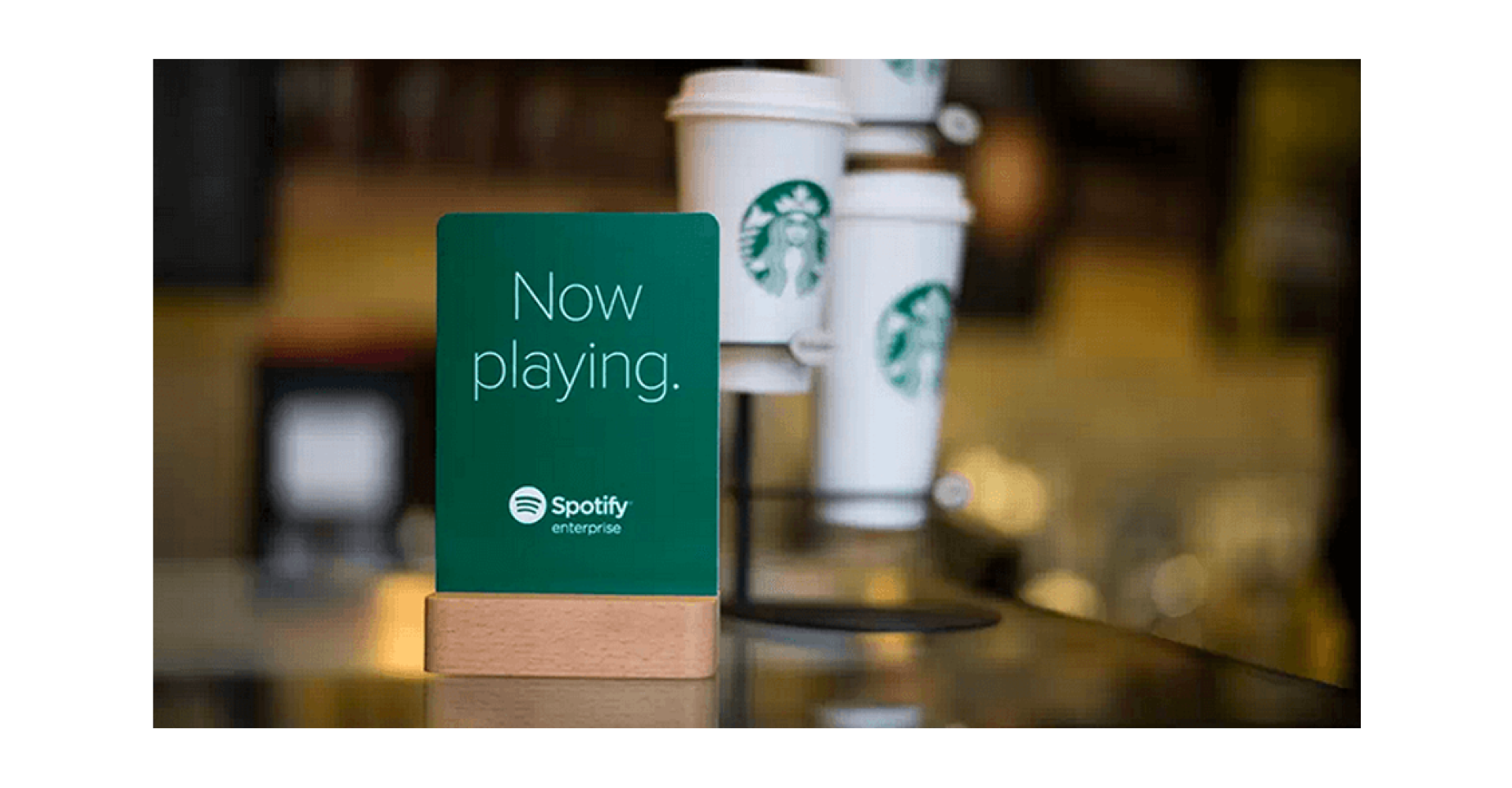
A digital co-branding partnership in which Starbucks integrated Spotify playlists in coffee shops and Spotify users received special offers from Starbucks. This combination of promotion channels increased audience engagement and gave both brands new opportunities for mutual PR.
Nike x Air Jordan
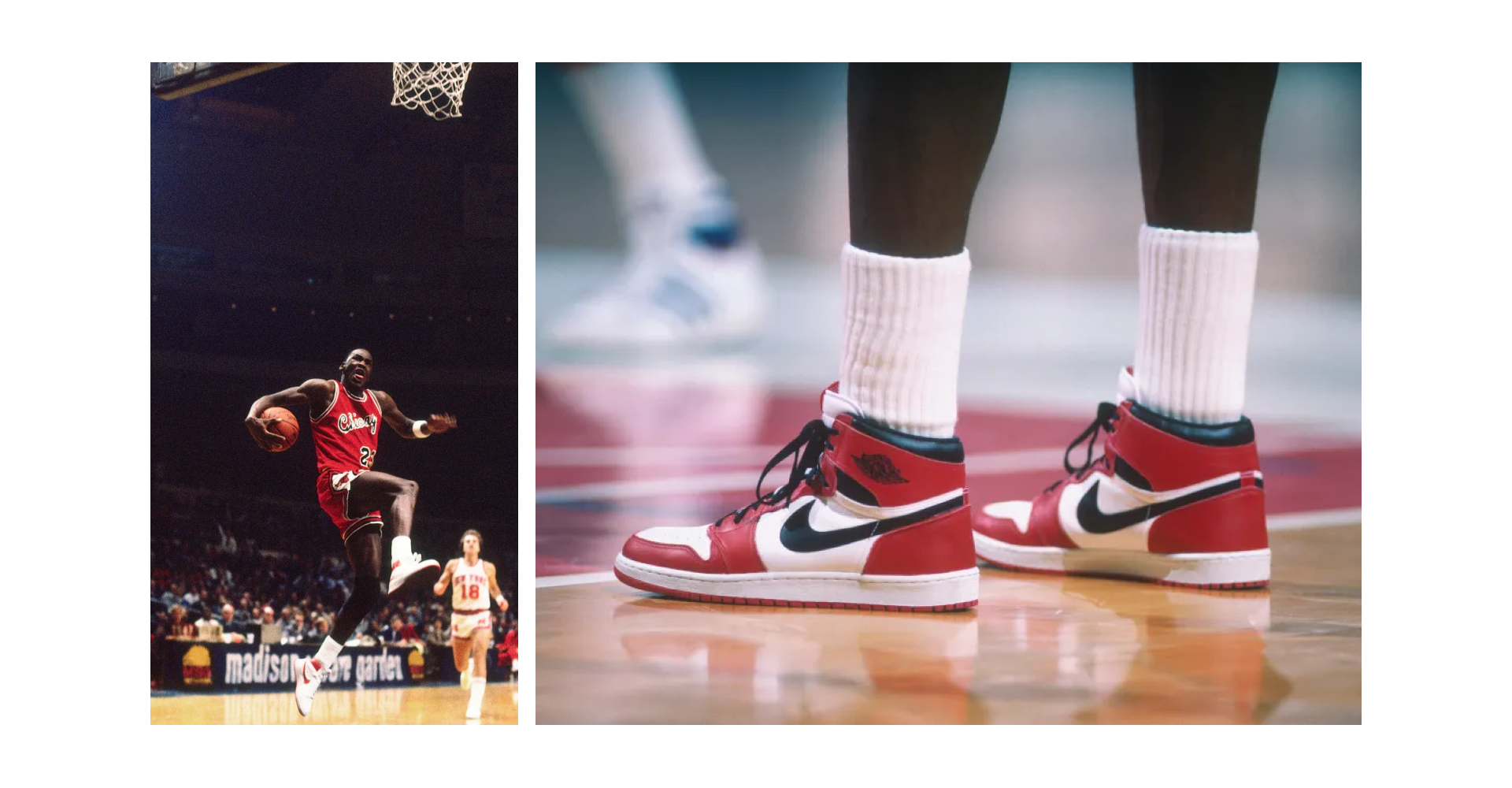
The historic partnership with Michael Jordan that led to the creation of the legendary Air Jordan sneaker line. Using the scandal with the «banned» black and red colors, Nike turned fines into a powerful marketing ploy and secured a new segment of the sports shoe market.
Gucci x Balenciaga
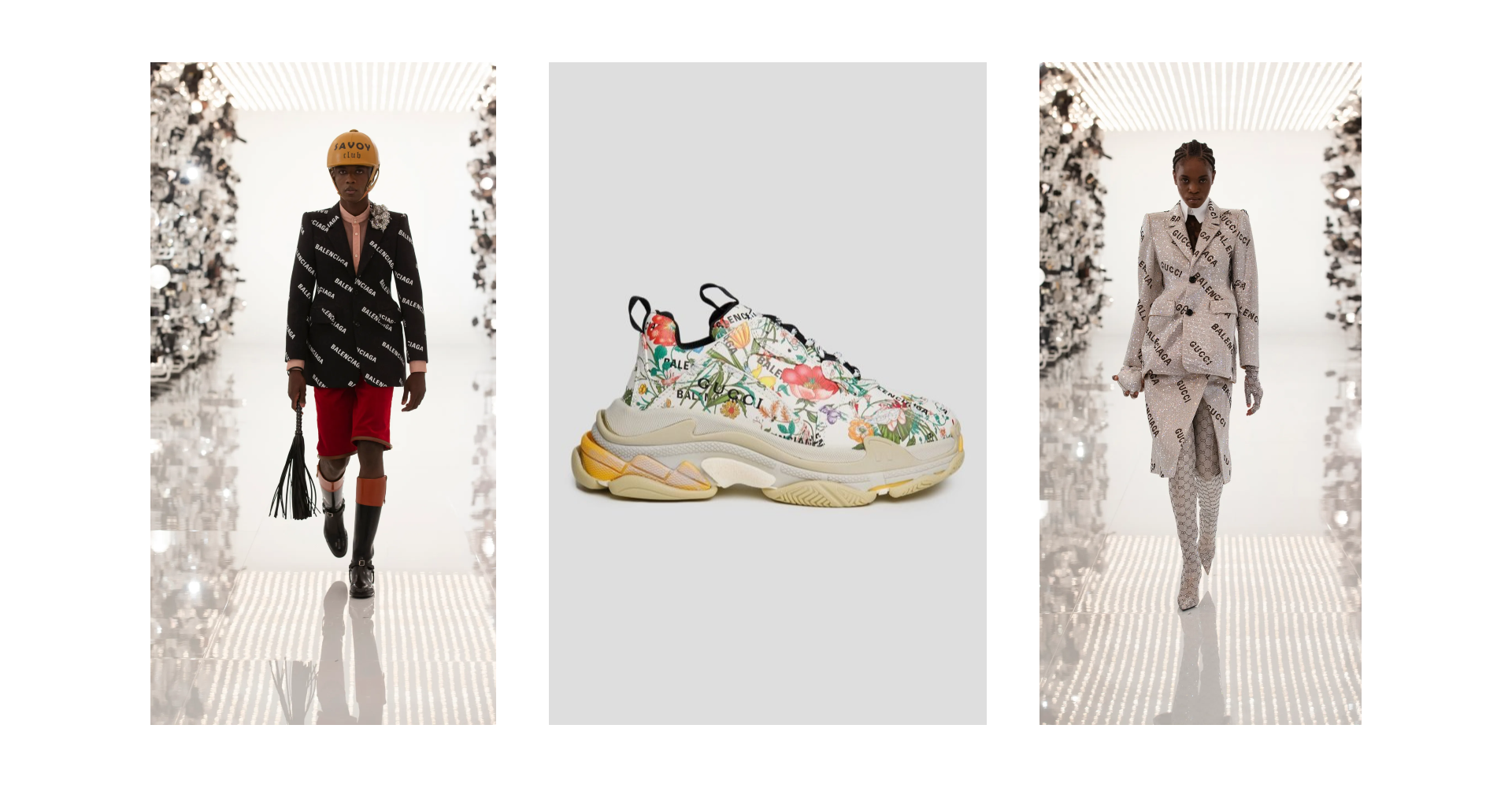
«Collaboration of the Century», which combined Balenciaga’s underground style with Gucci’s whimsy. The project exceeded the expectations of critics and consumers, demonstrating how two premium brands can combine creativity to create innovative clothing and accessories.
Famous collaborations of Ukrainian brands
In Ukraine, more and more companies are turning to the strategy of joint projects to strengthen their market positions, attract new audiences, and offer unique products and services to customers. Below, we have collected a selection of case studies that demonstrate how collaboration between Ukrainian brands and personalities can achieve significant business results and create real added value for consumers.
Silpo x Marco Cervetti
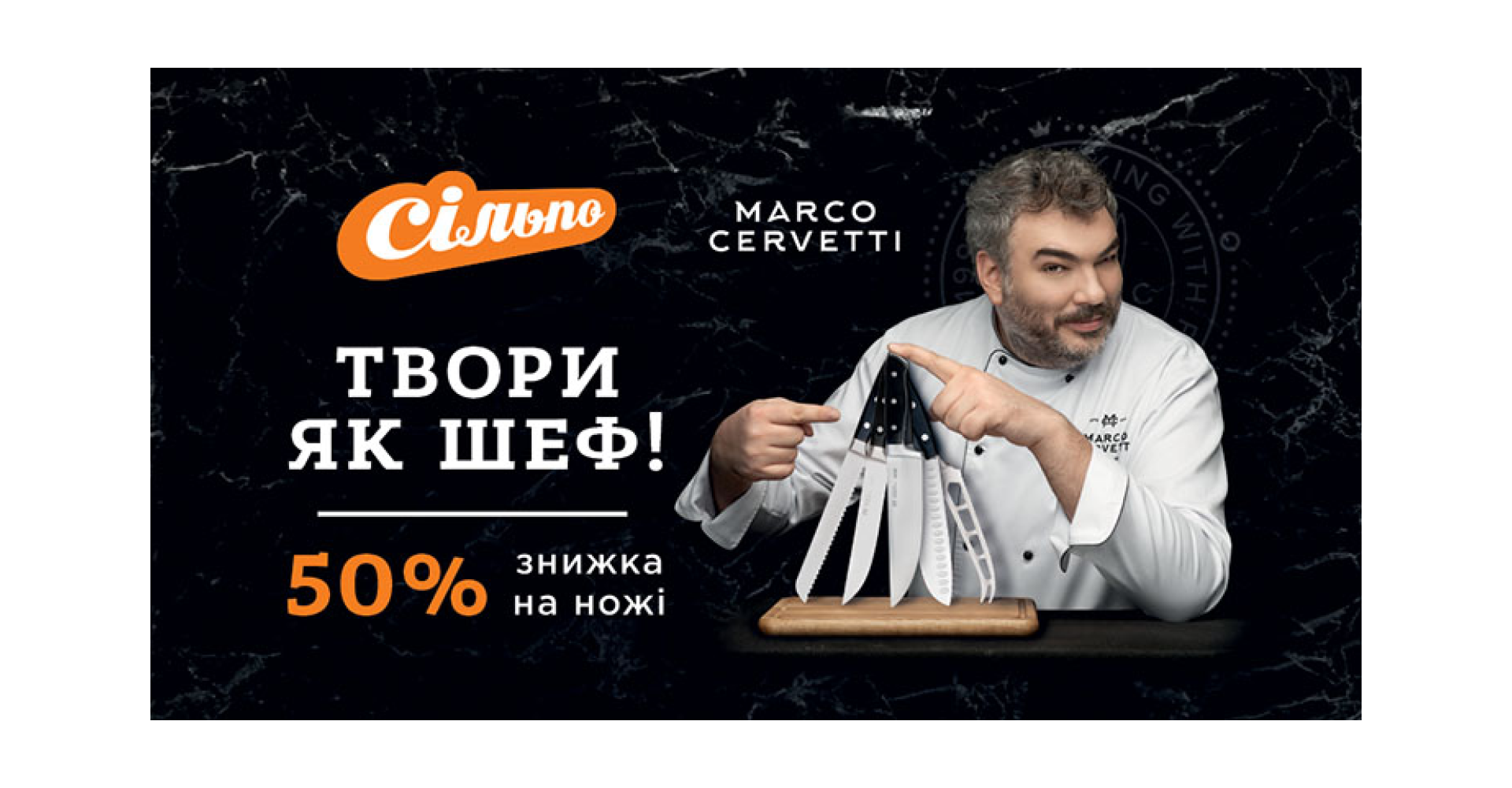
Silpo supermarket invited the famous chef Marco Cervetti to create a series of cookware and gastronomic sets. The cookware signed by the chef became an exclusive product, and recipes from Marco Cervetti in Silpo branded magazines increased interest in the chain’s products. As a result, the chain gained a 12% increase in footfall in the premium customer segment, and the chef’s brand became a new channel of communication with the Ukrainian audience.
Ponchyk Boy x Techno Eagle
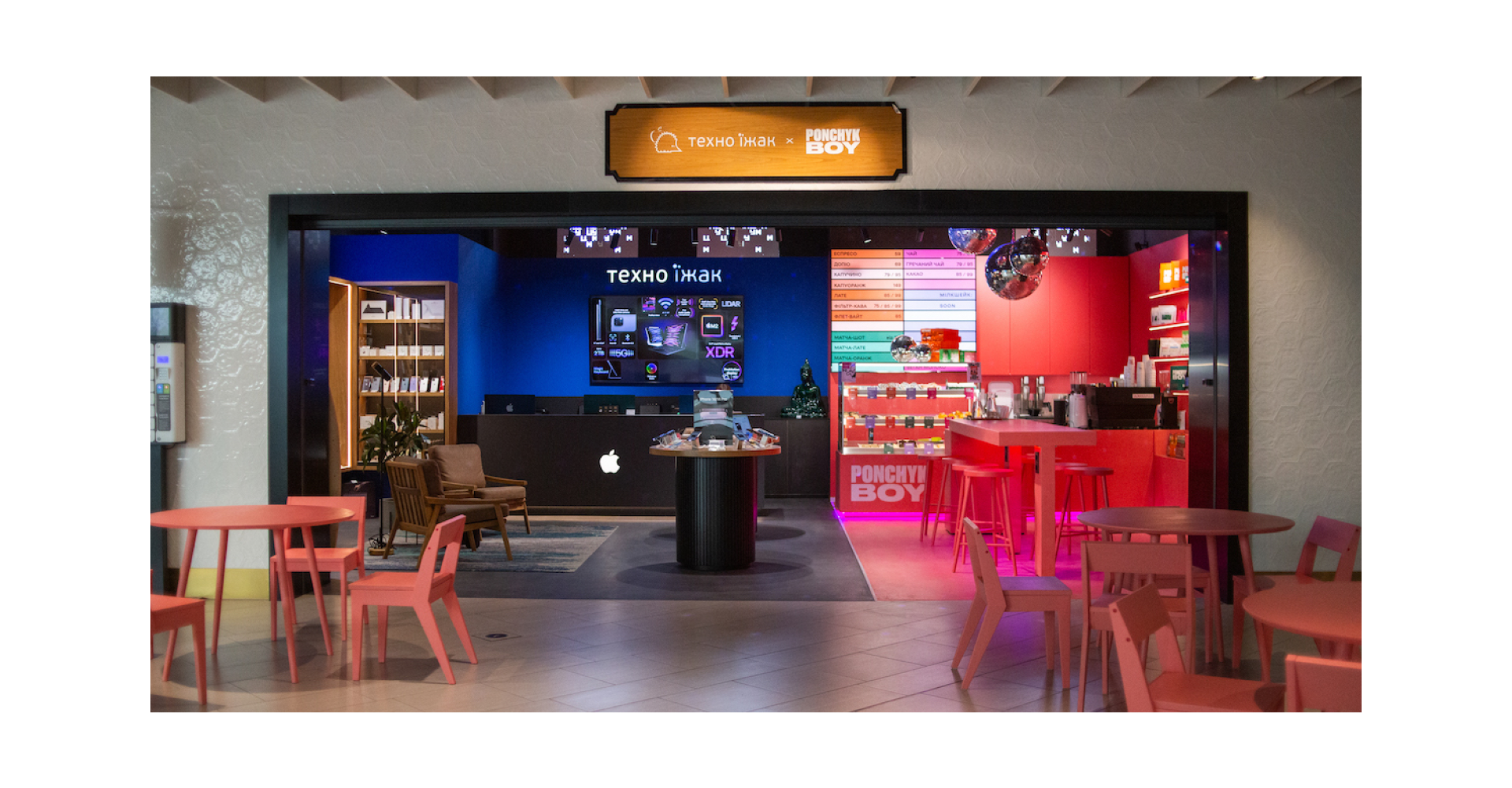
Two Ukrainian retailers, Ponchyk Boy, a manufacturer of children’s sweets, and Techno Yizhak, a chain of gadget stores, have teamed up to launch a limited collection of themed power banks in the shape of donuts. This unexpected way of combining products provided the brands with a crossover of audiences: gadget lovers learned about Ponchyk Boy, and families with children paid attention to the Techno Yizhak brand. Sales of the line exceeded the forecast by 30%.
Intertop x «Mavka. Forest Song»
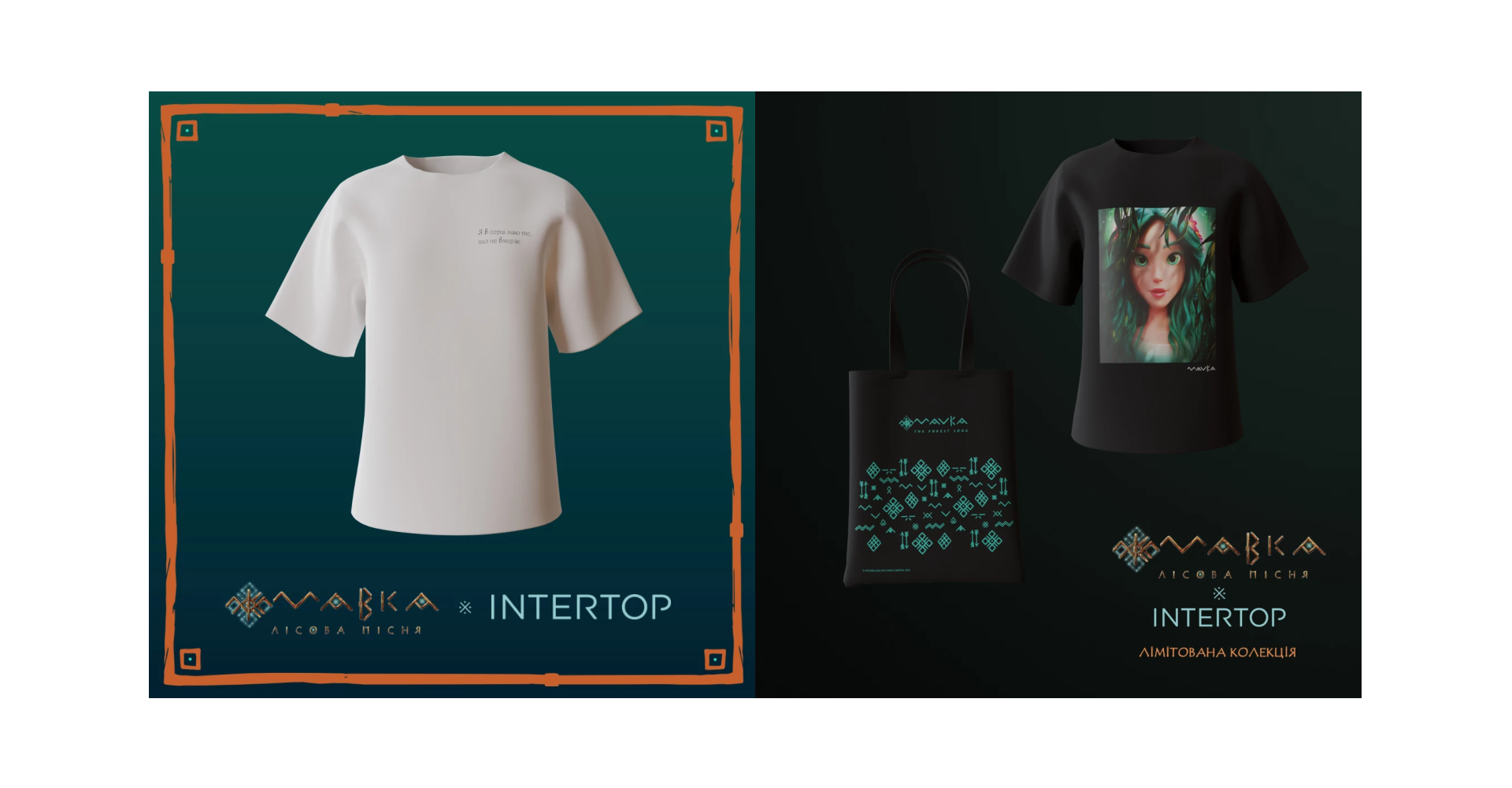
In 2024, the Intertop shoe and accessories chain teamed up with the animation studio that created the movie Mavka. The Forest Song, to launch a limited line of children’s and adult clothing and accessories. The collection consists of T-shirts, sweatshirts and shopper with unique designs inspired by the cartoon. Intertop provided production and distribution, and the studio provided exclusive art and promo through the movie’s official channels. As a result, the project increased sales of the themed collection by 25% in the first month, brought a 15% increase in social media audience thanks to the active use of colorful content from the cartoon, and created a PR effect with more than 50 publications in lifestyle and film media. This case study demonstrates how combining retail with a cultural brand can drive sales and increase the emotional engagement of consumers.
Global and Ukrainian cases demonstrate that regardless of the scale and scope of activity, brand collaboration allows creating unique offers, increasing awareness and effectively attracting new audiences through mutual PR and resource sharing.
Conclusions
Brand collaboration is a powerful marketing way to achieve diverse business goals. This solution allows you to combine the strengths of partners, grow your audience, increase awareness and loyalty, while optimizing costs and introducing innovations. The key to success is clear planning: jointly defined tasks, a balanced choice of partners, and an understanding of how each participant will benefit from the partnership. With the right combination of resources and audiences, brand collaboration turns into a mutually beneficial source of growth and efficiency for both parties.






 10/07/2025
10/07/2025  1851
1851



